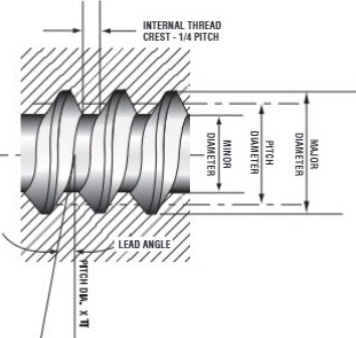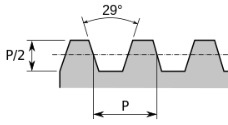Threads are an integral part of our everyday lives, from plumbing connections to fasteners in industrial machinery. Understanding the standard types of threads is essential for ensuring compatibility and reliability in various applications. In this comprehensive guide, we’ll explore the world of threads and answer the question, “What is the standard type of thread?”
Exploring the World of Threads
Threads are not one-size-fits-all; they come in various types, each designed for specific purposes. Let’s explore the realm of threads:
Unified Thread Standard (UTS)
The Unified Thread Standard is commonly used in the United States and Canada. It includes two series: Unified National Thread and Unified National Thread Fine. These threads are widely used in general-purpose applications, including bolts, screws, and nuts.
Metric Thread
The ISO metric screw thread standard is used for metric . They are prevalent in many countries worldwide, except the United States. Metric threads are known for their precise measurements and are commonly found in automotive and machinery applications.
NPT (National Pipe Thread)
NPT threads are designed for pipe fittings and plumbing connections. They have a tapered profile and are used to create a tight seal in pipes. NPT threads are crucial in preventing leaks in plumbing systems.
ACME Thread
ACME threads have a trapezoidal shape and are often used in applications where heavy loads are involved, such as in lead screws and jackscrews. Their design provides high efficiency and strength.
BSP (British Standard Pipe)
BSP threads are widely used in the United Kingdom and many Commonwealth countries. They come in two forms: BSP parallel (BSPP) and BSP tapered (BSPT). These threads are commonly used in plumbing and hydraulic systems.
Identifying Threads
Identifying thread types is essential for selecting the right fasteners or fittings. Here’s how to do it:
➡️ Measure the Pitch: Use a thread pitch gauge to measure the distance between threads. This measurement can help you determine if the thread is metric, UTS, or another type.
➡️ Check the Thread Angle: Different thread types have varying thread angles. For example, UTS threads have a 60-degree angle, while metric threads have a 55-degree angle.
➡️ Look for Thread Markings: In some cases, threads may have markings that indicate their type. These markings can provide valuable information.
➡️ Consult a Thread Identification Chart: If you’re unsure, consult a thread identification chart or tool to match the thread’s characteristics with known standards.
FAQs About Standard Threads
Are Metric Threads Better Than UTS Threads?
The choice between metric and UTS threads depends on the application. Metric threads are preferred in precision applications due to their standardized measurements, while UTS threads are common in general-purpose applications.
Can NPT Threads Be Used in Gas Applications?
Yes, NPT threads are suitable for gas applications, provided they are sealed correctly with thread sealant to prevent leaks.
What Is the Most Common Thread Type in Automotive Applications?
In most countries outside the United States, metric threads are the standard in automotive applications due to their precision and compatibility with international standards.
Are ACME Threads Interchangeable with Other Threads?
ACME threads are not interchangeable with other standard threads due to their trapezoidal shape and specific applications.
Do BSP Threads Require Teflon Tape?
Yes, applying Teflon tape or thread sealant is necessary for creating a secure seal with BSP threads, especially in plumbing systems.
Where Can I Find Thread Identification Tools?
Thread identification tools are available at hardware stores, online retailers, and industrial supply shops. They can help you accurately identify thread types.
Conclusion
Understanding the standard types of threads is essential for anyone working with fasteners, pipes, or machinery. Whether you’re a DIY enthusiast or a professional, knowing how to identify and use the right thread type can save you time and prevent costly mistakes. Remember to consider the application’s requirements, measure the pitch and angle, and consult identification resources when needed. With this knowledge, you’ll be better equipped to tackle a wide range of projects.
Post time: Oct-04-2023



